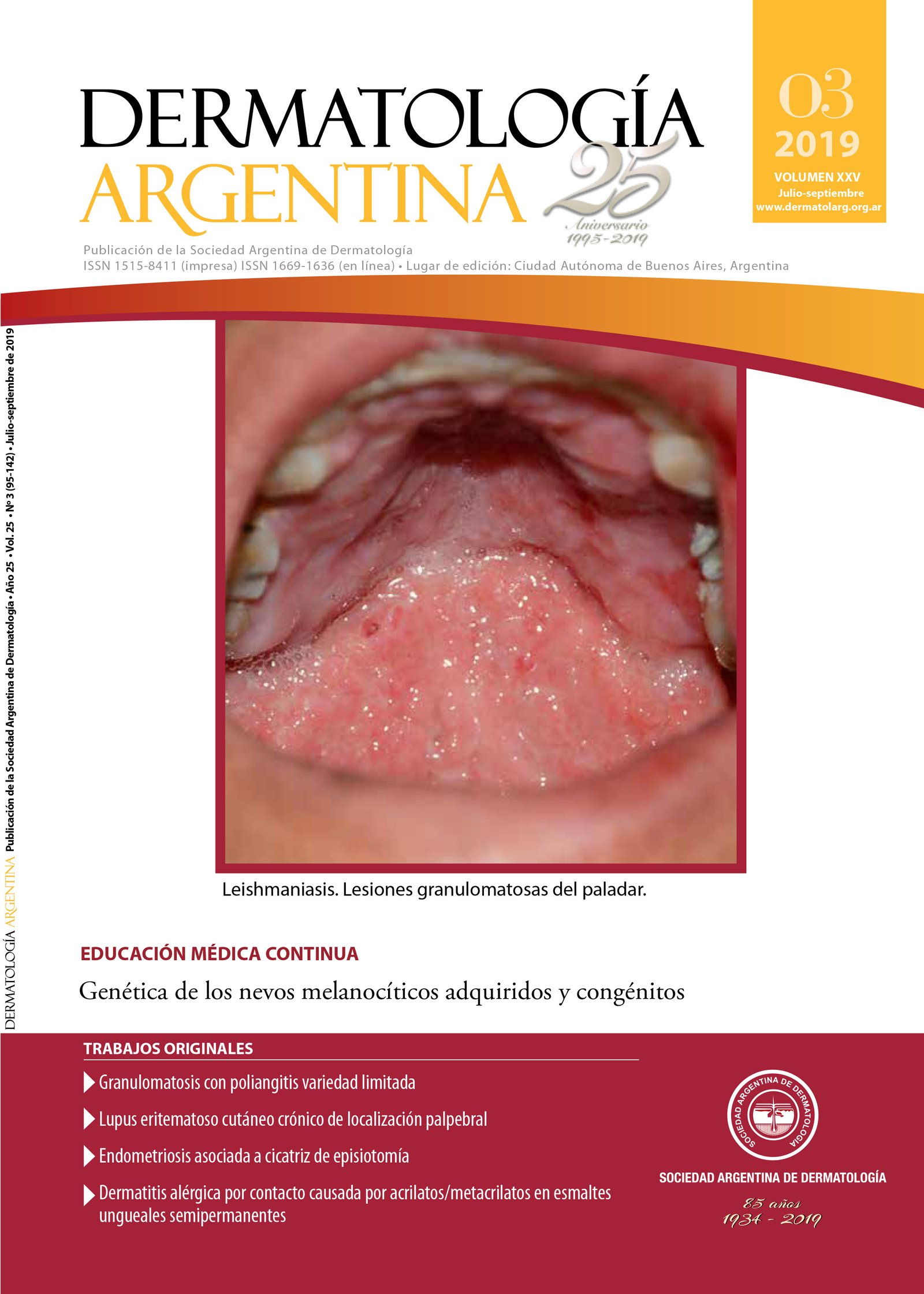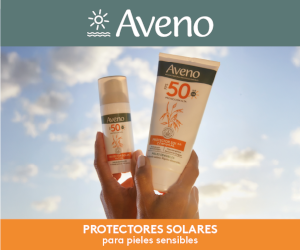Genetics of acquired and congenital melanocytic nevi
Keywords:
acquired melanocytic nevi, congenital melanocytic nevi, Braf, NrasAbstract
Acquired melanocytic nevi are benign tumors formed by a limited melanocytic proliferation. A mutation in proto-oncogene Braf, BrafV600E, is present in most acquired melanocytic nevi, regardless of their histological type. Braf is a serine/ threonine kinase that modulates other proteins activity by phosphorylation and is part of the RAS-RAF-MAPK signaling pathway. BrafV600E imitates the active (phosphorylated) form of Braf wild-type, generating a constitutively active form of the protein, and may be the only mutagenic event necessary to form an acquired nevus. Nevi growth is limited, in part, by BrafV600E´s induction of cell cycle suppressor proteins, such as p16 (a CDKN2A gene product) and immune cells which infiltrate some nevi.
Congenital melanocytic nevi are benign clonal proliferations developed in intra-uterine life, defined by their presence at birth or their appearance in
the first year of life. 94.7% of big/ giant congenital nevi and 70% of small/ medium congenital nevi have Nras mutations. Nras mutations in congenital melanocytic nevi are post-zygotic mutations and therefore are absent in germline cells. Braf mutations are found in 5.2% of big/giant congenital nevi and 30% of small/medium congenital nevi. The high incidence of this mutation in this last group might be caused by misclassification of acquired melanocytic nevi with histological features of congenital ones, as congenital nevi.
References
I. Wachsmuth RC, Turner F, Barrett JH, Gaut R, Randerson-Moor JA, Bishop DT, Bishop JA. The effect of sun exposure in determining nevus density in UK adolescent twins. J Invest Dermatol 2005;124:56-62.
II. Shain AH, Bastian BC. From melanocytes to melanomas. Nat Rev Cancer 2016;16:345-358.
III. Mordoh A. Clínica del melanoma. Acta Bioquim Clin Latinoam 2009;43:327-331.
IV. Hawkes JE, Truong A, Meyer LJ. Genetic predisposition to melanoma. Semin Oncol 2016;43:591-597.
V. Roh MR, Eliades P, Gupta S, Tsao H. Genetics of melanocytic nevi. Pigment Cell Melanoma Res 2015;28:661-672.
VI. Davies H, Bignell GR, Cox C, Stephens P,et ál. Mutations of the BRAF gene in human cancer. Nature 2002;417:949-954.
VII. Liu LS. Molecularly targeted therapies for melanoma. Int J Dermatol 2013;53:523-530.
VIII. Shain AH, Yeh I, Kovalyshyn I, Sriharan A,et ál. The Genetic evolution of melanoma from precursor lesions. N Engl J Med 2015;373:1926-1936.
IX. Bauer J, Curtin JA, Pinkel D, Bastian BC. Congenital melanocytic nevi frequently harbor NRAS mutations but no BRAF mutations. J Invest Dermatol 2007;127:179-182.
X. Hayward N K, Wilmott J S, Waddell N,et ál. Whole-genome landscapes of major melanoma subtypes. Nature 2017;545:175-180.
XI. Alexandrov LB, Nik-Zainal S, Wedge DC,et ál.Signatures of mutational processes in human cancer. Nature 2013;22:415-421.
XII. Miller AJ, Mihm M. Mechanisms of disease: melanoma. N Engl J Med 2006;355:51-65.
XIII. Charbel C, Fontaine RH, Kadlub N, Coulomb-L’Hermine A,et ál.Clonogenic cell subpopulations maintain congenital melanocytic nevi. J Invest Dermatol 2015;135:824-833.
XIV. Etchevers HC. Hiding in plain sight: molecular genetics applied to giant congenital melanocytic nevi. J Invest Dermatol 2014;134:879-882.
XV. Charbel C, Fontaine RH, Malouf GG, Picard A,et ál. NRAS mutation is the sole recurrent somatic mutation in large congenital melanocytic nevi. J Invest Dermatol 2014;134:1067-1074.
Downloads
Published
Issue
Section
License
El/los autor/es tranfieren todos los derechos de autor del manuscrito arriba mencionado a Dermatología Argentina en el caso de que el trabajo sea publicado. El/los autor/es declaran que el artículo es original, que no infringe ningún derecho de propiedad intelectual u otros derechos de terceros, que no se encuentra bajo consideración de otra revista y que no ha sido previamente publicado.
Le solicitamos haga click aquí para imprimir, firmar y enviar por correo postal la transferencia de los derechos de autor













